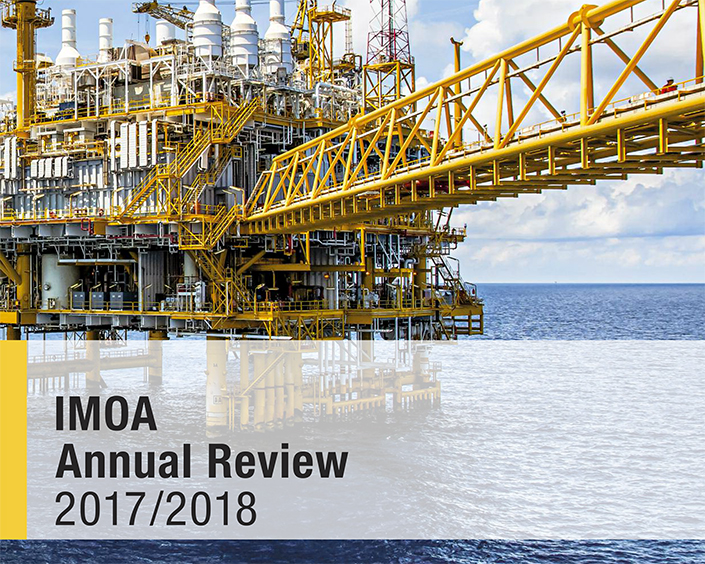Back | Blog posts overview
Another year of progress
24/09/2018
Annual Review 2017/18
We are pleased to announce that the 2017/18 Annual Review is now available, summarizing the developments and key milestones achieved during the past year through the work of our committees, staff and consultants.

The Health, Safety and Environment (HSE) Committee continued its work to promote evidence-based regulation, closely monitoring the international regulatory arena, and engaging in dialogue with authorities where appropriate.
One notable success was the removal of molybdenum and molybdenum compounds from the List of Chemicals of High Concern to Children (CHCC) in Washington State’s Children’s Product Safety Rule. This establishes an important precedent for other U.S. states, demonstrating the value of engaging regulators with sound science and robust toxicological data. The Committee also contributed to the review of molybdenum’s toxicological profile by the Agency for Toxic Substances and Disease Registry (ATSDR), providing IMOA’s most recent datasets and securing industry endorsement as part of the public consultation period.
In the EU, the Committee was active on a number of fronts, addressing regulatory initiatives which could have implications for molybdenum substances, including limits and hazard classifications relating to crystalline silica, Poorly Soluble Low Toxicity Particles and cobalt metal, which is present in all stainless steel (usually as an impurity). Our collective work is designed to minimize the impact of such initiatives on our member organizations.
The Committee has also overseen the updating of the Life Cycle Inventories (LCI) for roasted molybdenite concentrates and ferromolybdenum, as part of its wider remit to ensure that data and the results of human health and environmental studies are broadly disseminated.
The Molybdenum Consortium (MoCon) continued its important work of ensuring that the 12 REACH technical dossiers are kept up to date as new information becomes available. Content is also being examined to ensure that molybdenum substances are not incorrectly considered as potential Substances of Very High Concern (SVHC) or Substances of Equivalent Concern (SEC). Preparing the technical arguments to defend the Prenatal Development Toxicity (PNDT) study has also been a key focus for the MoCon Technical Working Group during the past year.
The Market Development Committee has made excellent progress in driving demand through the promotion of molybdenum in new and existing applications.
In carbon steels, two major Chinese gear producers are already trialling new molybdenum-alloyed gear steels thanks to the conclusions of an IMOA-funded project. Initiatives to promote the benefits of molybdenum alloying in steel continue to generate dividends with other steel producers, manufacturers and engineering companies. In stainless steel, promotion of molybdenum-containing grades to the Architecture, Building and Construction (ABC) sector through seminars, webinars and project meetings remains a core activity in North America and elsewhere.
China remained an area of focus for the Market Development Committee. The publication of ‘Made in China 2025’, the country’s blueprint for industrial modernization, presents new opportunities for increased molybdenum use. Promoting specialty steels involving molybdenum is also a key activity. Dialogue with Chinese end-users continued, with ‘round table’ meetings on stainless steel curtain walls, in collaboration with the CSCPG (China Stainless Steel Cooperation and Promotion Group).
Our joint service water pipe project with the Nickel Institute and the International Stainless Steel Forum is gaining momentum with water authorities expressing an interest in the leak-resistant corrugated stainless steel piping solution. This is an important project which is helping to address non-revenue water loss globally. Our work with Team Stainless this year focused on the collaborative development of design tables for structural stainless steel and dissemination of information on its use in the design and fabrication of bridges and highway structures.
Communications continues to play an important role in raising awareness of molybdenum and its properties. Strong relationships fostered with trade and specialist media outlets resulted in the publication of numerous articles, while two editions of MolyReview were published, with some articles adapted and featured in the trade media.
On-line communication is now a core part of our activity with an average of 12,000 visitors to www.imoa.info each month. Our social media channels continue to grow in popularity with followers increasing by almost 50% over the year. The pages carry IMOA news, links to publications, excerpts of popular MolyReview articles and details of industry events as well as reposted content from other sources which we think followers will find interesting. If you haven’t already, why not follow us on Twitter and LinkedIn.
For full details of IMOA’s activity during the past year, please download the 2017/18 Annual Review.
Back | Blog posts overview

